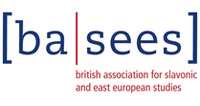Programme :
Presentations by StreamsThe Life and Afterlife of Soviet Planning: Industrial Urbanism, Built Environments, and Geographic Politics
Since the 1990s, the so-called ‘monotowns’ have emerged as emblematic symbols of post-Soviet industrial collapse. With their economies revolving around a single industry or complex of enterprises, these settlements entered a phase of rapid decline following transition to a market economy plagued by infrastructural decay, unemployment, and depopulation. While monotowns present the most extreme example of the failure of Soviet urbanism, very few cities in the post-Soviet space fit the narrow definition of ‘monotown,’ whose turbulent fate has dominated press headlines and policy debates. Instead, one can observe a continuum of urban forms, which were shaped by the Soviet-era industrialization drive: from the hubs of new, mid-sized manufacturing centers created to speed up urbanization of frontiers, to secluded, ‘closed’ military cities and smaller, satellite towns or industrial neighborhoods established on the outskirts of existing urban centers to expand productive capacity. The disproportionate attention to the ‘monotowns’ has often overlooked the diversity of forms of Soviet urbanism and the uneven trajectories of their post-socialist development. This panel seeks to rethink the past and present of Soviet urban space by exploring the everyday lives and experiences of inhabitants as well as public representations of modernist architectural projects and industries in the USSR and beyond. The analysis of Soviet urbanism has tended to oscillate between ‘semiotic’ approaches that focus on ‘decoding’ the urban landscape and ideologies behind specific architectural forms, and dismissive or stereotypical images of dystopian, homogenous housing blocks that suppress creativity and individual autonomy. This panel aims to move beyond dominant representations by foregrounding accounts that focus on imagining Soviet and post-Soviet urban forms as spaces of creative encounter between different, often conflicting logics of planning and governance, socially and ethnically heterogenous groups, and experimental terrains for production of new forms of sociality.
The panel aims to address a broad range of questions, including, but not limited to:
- What are the differences and similarities in the trajectories of post-Soviet planned cities or neighborhoods? How are these dynamics affected by geographical and national context, proximity to regional metropolitan centers, and/or the nature of key industries?
- What are the peculiarities of myth and identity-making in Soviet-era planned cities?
- How do local residents and tourists engage with industrial heritage and ‘the ruins’ of shutdown factories or depopulated apartment blocks?
- How do people resist the economic and symbolic devaluation of their hometowns? And what visions of future development do they seek to articulate?

